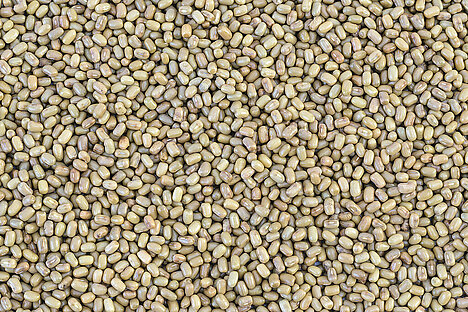Matted bean

You may never have heard of mat beans, but these small seeds have a long history as a crop. They originate from India and have been cultivated there for over 4000 years. Mat beans belong to the legume family and are therefore related to peas, lentils and soybeans. They have a nutty taste and a firm consistency.
But are mat beans also suitable for dogs? And what are their advantages and disadvantages? In this article, you can find out more about this ancient crop and how you can feed it to your dog.
What are the benefits of mat beans for dogs?
Mat beans are a good source of vegetable protein, which is important for muscle building and cell regeneration. They are also high in fiber, which aids digestion and increases satiety. Mat beans also provide important minerals such as magnesium, calcium and iron as well as vitamins A, C and B6. These nutrients support your dog's immune system, bone formation and blood circulation.
Mat beans can also serve as an alternative or supplement to meat if your dog has an intolerance or allergy or if you want to offer him a vegetarian or vegan diet. Mat beans are gluten-free and have a low glycemic index, which means that they do not cause a sharp rise in blood sugar levels.
How can you feed mat beans to your dog?
Mat beans need to be cooked before consumption to break down any toxins. You can buy them either as whole beans or as flour. If you use whole beans, you should soak them overnight to reduce the cooking time. You can then boil or steam them in water or roast them in the oven.
You can eat them on their own or mix them with other ingredients such as vegetables, rice or meat. You can also mash them into a paste or form them into meatballs. If you buy moth bean flour, you can use it to bake cookies or bread.
Another option is to germinate the broad beans. All you have to do is soak them in water for a few days and rinse them regularly. The sprouted bean sprouts have a higher vitamin content than unsprouted bean seeds. You can give them to your dog raw or briefly blanched.
What are the disadvantages of mat beans for dogs?
Mat beans also contain phytic acid, oxalic acid and lectins. These substances can inhibit the absorption of minerals and lead to flatulence, diarrhea or kidney stones. To minimize these risks, you should always boil or sprout mat beans well. You should also only feed them in moderation and not use them as the sole food. Your dog also needs other food sources such as vegetables, fruit or cereals.
Mat beans are not poison for dogs, but they are not a miracle cure either. They can be a useful supplement if you pay attention to the correct preparation and dosage. It's best to talk to your vet about whether mat beans are suitable for your dog and how best to integrate them into their diet.
If you notice any signs of hypersensitivity or poisoning in your dog, you should see your vet immediately. We are not a substitute for a vet, but we try to be as accurate as possible. Every dog reacts differently and we recommend you get a second opinion or consult your vet if in doubt.
Stay healthy and take good care of your four-legged friend!😊
Similar to Matted bean
Kidney beans are a variety of the common bean (Phaseolus vulgaris) and belong to the legume family. They are named after the kidney because of their visual similarity in shape and color. They...
Pinto beans are a type of garden bean that belongs to the legume family. They have a beige-brown color with red speckles and are therefore also called "speckled beans". They originally come from...
Black beans contain many valuable nutrients that are important for your dog's health. These include: Fiber: It aids digestion and can prevent constipation or diarrhea.Protein: They provide...
White beans are a type of legume belonging to the legume family. They have a creamy texture and a mild flavor. They are often used in soups, stews or salads. White beans are rich in vegetable...



